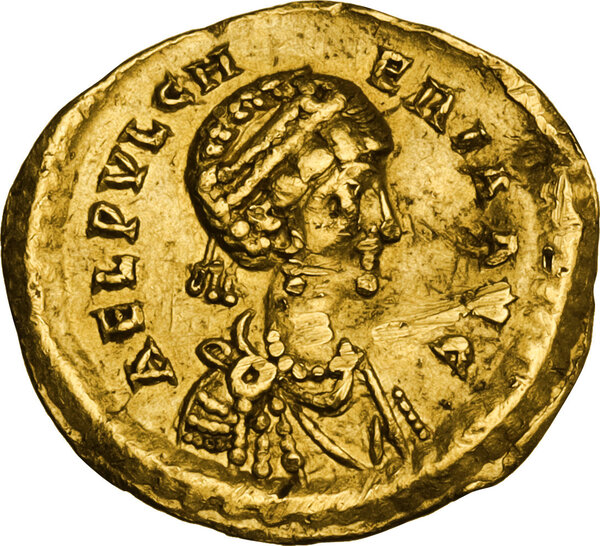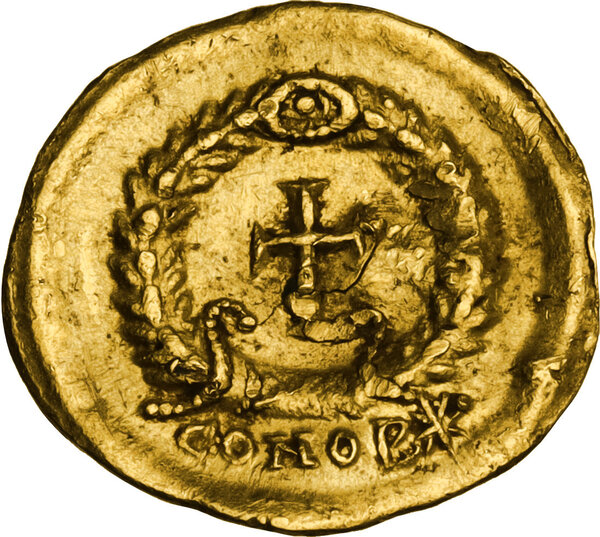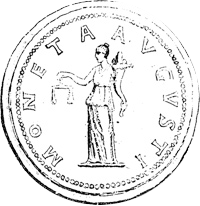

Aelia Pulcheria, sister of Theodosius II and wife of Marcian (414-453). AV Tremissis, Constantinople mint, c. 430-440 AD. Obv. AEL PVLCH-ERIA AVG. Pearl-diademed and draped bust right, seen from front, wearing necklace and earrings, hair elaborately weaved with long plait up the back of head and tucked under diadem. Rev. Cross within wreath; below CONOB star. RIC X 214 (R2); Depeyrot 72/4. 1.47 g. 15.00 mm. RRR. Very rare with RIC wreath ties type 5. Scratch on obverse and bent flan, otherwise. good VF. Aelia Pulcheria, the daughter, sister and wife to three different East Roman emperors, played a critical role in maintaining the stability of the Eastern Roman regime, during the tumultuous early to mid-fifth century AD. Born circa AD 398 to Arcadius and Aelia Eudoxia, she had a far more dominating personality than her timid younger brother, Theodosius II. When Arcadius died in AD 408 and Theodosius ascended the throne, at the age of seven, Pulcheria took upon herself the role of her brother's protector. In AD 414, she came of age and the Senate declared her Augusta, or Empress, whereupon she took over the regency herself. She declared her intent to remain a virgin (possibly to avoid a political marriage), and took her brother's education into her own hands, seeing to it he learned how to look, act, and perform rituals like an emperor; however he lacked backbone, which she had to provide to keep the Theodosian regime in undisputed power. Under her guidance, the Eastern Roman Empire successfully intervened in the West and installed her nephew, Valentinian III, on the throne (AD 424-425), while to the East, a brief war against Persia was successfully prosecuted (AD 421). When Theodosius was killed in a riding accident, in AD 450, Pulcheria briefly ruled as sole empress before bowing to demands that she marry and thus chose a suitable man to rule as Augustus. She wisely chose the lowborn but capable Marcian, who proved to be the strong, even-handed ruler the Empire needed. The year following her marriage, Pulcheria was instrumental in summoning the Fourth Ecumenical Council at Chalcedon, which established the basic principles of teaching the Eastern Orthodox Church. Pulcheria died in AD 453, having kept her vows of virginity and defense of her Imperial dynasty for a half-century and left all of her possessions to the poor. (Heritage 3039, 2021, 31146 note).


